ExxonMobil has misled consumers for years by perpetuating a “myth” about plastic recycling, according to a new lawsuit filed by the state of California.
Technology
Apple iPhone 16 Pro vs Google Pixel 9 Pro
Both Apple and Google released compact flagship smartphones recently. Apple’s arrived earlier this month, while Google’s landed in mid-August. We’re here to compare those two phones, the Apple iPhone 16 Pro vs Google Pixel 9 Pro. Not only are both of them compact phones, but they actually have the same display sizes. To make things even more similar, they also have flat sides, and so on. There are a lot of differences between them, though, so there’s plenty to talk about here.
As per usual, we will first list their specifications and will take it from there. Following that, we’ll be comparing their designs, displays, performance, battery life, cameras, and audio output. These two phones are just as powerful as their larger siblings. Neither company decided to cut corners with the smaller flagships this year, which is always nice to see. So… let’s get to it, shall we?
Specs
Apple iPhone 16 Pro vs Google Pixel 9 Pro, respectively
– Screen size:
6.3-inch LTPO Super Retina XDR OLED ( flat, 120Hz, HDR, 2,000 nits max brightness)
6.3-inch QHD+ OLED (120Hz, HDR, 3,000 nits)
– Display resolution:
2622 x 1206
2856 x 1280
– SoC:
Apple A18 Pro (3nm)
Google Tensor G4
– RAM:
8GB
16GB (LPDDR5X)
– Storage:
128GB/256GB/512GB/1TB (NVMe)
128GB/256GB/512GB/1TB (UFS 3.1)
– Rear cameras:
48MP (wide, f/1.8 aperture, 1/1.28-inch sensor, 1.22um pixel size, sensor-shift OIS), 48MP (ultrawide, f/2.2 aperture, 0.7um pixel size, PDAF), 12MP (periscope telephoto, f/2.8 aperture, 1/3.06-inch sensor, 1.12um pixel size, 3D sensor-shift OIS, 5x optical zoom)
50MP (wide, f/1.7 aperture, 1.2um pixel size, OIS, EIS), 48MP (ultrawide, f/1.7 aperture, 123-degree FoV), 48MP (periscope telephoto, f/2.8 aperture, OIS, EIS, 5x optical zoom)
– Front cameras:
12MP (f/1.9 aperture, PDAF, 1/3.6-inch sensor size, OIS)
42MP (f/2.2 aperture)
– Battery:
3,582mAh
4,700mAh
– Charging:
38W wired, 25W MagSafe wireless, 15W Qi2 wireless, 7.5W Qi wireless, 5W reverse wired
27W wired, 21W wireless (Pixel Stand), 12W Qi wireless, 5W reverse wireless (no charger)
– Dimensions:
149.6 x 71.5 x 8.3 mm
152.8 x 72 x 8.5 mm
– Weight:
199 grams
– Connectivity:
5G, LTE, NFC, Wi-Fi, USB Type-C, Bluetooth 5.3
– Security:
Face ID (3D facial scanning)
Ultrasonic in-display fingerprint scanner
– OS:
iOS 18
Android 14
– Price:
$999+
$999+
– Buy:
Apple iPhone 16 Pro
Google Pixel 9 Pro (Best Buy, Google Store)
Apple iPhone 16 Pro vs Google Pixel 9 Pro: Design
Both of these phones are made out of metal and glass. The thing is, the iPhone 16 Pro has a frame made out of titanium, with some aluminum in the mix. The Pixel 9 Pro’s is made out of aluminum. Titanium is the stronger material, but aluminum is better when it comes to heat dissipation. Both phones have flat sides all around, though they do curve a bit towards the very edges, for comfort’s sake. You’ll also notice rounded corners on both smartphones.
The front and back sides on both devices are flat too. The iPhone 16 Pro includes a pill-shaped cutout at the top of the display, the so-called ‘Dynamic Island’. Google’s handset has a display camera hole instead. The bezels are very thin on both of these devices, and they’re also uniform on top of that. On the iPhone 16 Pro, you’ll find the power/lock key and the ‘Camera Control’ buttons on the right-hand side. On the left, the volume rocker buttons are located, and the ‘Action Button’.
The Pixel 9 Pro includes all of its physical keys on the right-hand side. The power/lock button sits there, and below it you’ll find the volume up and down buttons. Apple’s handset has a camera island in the top-left corner of its back, with three cameras in there. Apple’s well-known rear camera design is included here. The Pixel 9 Pro has a pill-shaped camera island at the top, which is centered. That design makes the Pixel 9 Pro sit nicely on the table, without wobbling, unlike the iPhone 16 Pro.
Apple’s handset is a couple of millimeters shorter than the Pixel 9 Pro. It’s also ever so slightly narrower and thinner, but the difference is less than a millimeter. The two smartphones have the exact same weight, they weigh 199 grams. They’re both also IP68 certified for water and dust resistance.
Apple iPhone 16 Pro vs Google Pixel 9 Pro: Display
The iPhone 16 Pro features a 6.3-inch 2622 x 1206 LTPO Super Retina XDR OLED display. That panel is flat, and it offers an adaptive refresh rate of up to 120Hz. HDR content is supported here, and the same goes for Dolby Vision. The peak brightness of this panel is 2,000 nits. The screen-to-body ratio is at around 90%, while the display aspect ratio is 19.5:9. This display is protected by the Ceramic Shield glass.
![]()
Google’s handset, on the other hand, features a 6.3-inch 2856 x 1280 LTPO OLED display. This panel also offers an adaptive refresh rate of up to 120Hz. It supports HDR10+ content, and the peak brightness here is 3,000 nits. The screen-to-body ratio is at around 87%, while the display aspect ratio sits at 20:9. The Gorilla Glass Victus 2 from Corning is included on top of the display here.
Both of these displays are great. They’re bright, vivid, and more than sharp enough. The touch response is good on both panels, and the viewing angles are great. The blacks are also quite deep, as you’d expect out of OLED displays. Neither display offers high-frequency PWM dimming, though, if that’s something you care about. They both do get bright enough for outdoor use but are not the brightest around.
Apple iPhone 16 Pro vs Google Pixel 9 Pro: Performance
The Apple A18 Pro SoC fuels the iPhone 16 Pro. That is Apple’s brand-new flagship processor. It’s a 3nm chip, in case you were wondering. Apple paired that up with 8GB of RAM and NVMe flash storage. The Pixel 9 Pro is fueled by the Google Tensor G4 processor. That is Google’s new 4nm chip. That processor is paired with 16GB of LPDDR5X RAM and UFS 3.1 flash storage. Neither phone offers expandable storage, by the way.
Apple’s chip is more powerful than Google’s, quite a bit more powerful. Google’s processor is adapted for Pixel phones, though, and it’s made with AI tasks in mind. In regular, day-to-day use, both of these smartphones are outstanding. They do everything you need them to without skipping a beat. Browsing, messaging, emailing, image editing, video processing, basically anything you can think of.
What about gaming? Well, the iPhone 16 Pro is the more powerful smartphone here, both in terms of the CPU and the GPU. It can easily run any game you’ll find on the App Store, even the most demanding ones. The Pixel 9 Pro does not have that much CPU and GPU prowess, but it can still run pretty much every game. Even the most demanding ones are playable, but you may not want to play them at the very highest details, as you’ll notice some limitations. Both smartphones do get quite warm during gaming, but not too warm.
Apple iPhone 16 Pro vs Google Pixel 9 Pro: Battery
The iPhone 16 Pro features a 3,582mAh battery. That is not something Apple confirmed, but something that had to be checked once the phones became available. The Pixel 9 Pro, on the other hand, has a 4,700mAh battery on the inside. Android phones usually have larger batteries, so that’s perfectly normal. The thing is, both of these smartphones do offer really, really good battery life, so that’s not something you need to worry about.
At this point in time, we’re still working on our iPhone 16 Pro review, but have been using the phone for a while, and do know what to expect in terms of battery life. Both of these devices can get you through the day, even if you’re using them quite a bit. Getting to over 7 hours of screen-on-time is possible on both smartphones, depending on your usage. Do note that we didn’t really play games on the day we reached such numbers. Your mileage may, of course, vary, as there are many factors involved.
The iPhone 16 Pro supports 38W wired charging, along with 25W MagSafe wireless, 15W Qi2 wireless, and 7.5W Qi wireless charging. On top of that, 5W reverse wired charging is also supported. The Pixel 9 Pro, on the other hand, supports 27W wired, 21W wireless with Pixel Stand, 12W Qi wireless, and 5W reverse wireless charging. Neither of these two phones includes a charger in the retail box, only the charging cable.
Apple iPhone 16 Pro vs Google Pixel 9 Pro: Cameras
You’ll find three cameras on the back of both of these smartphones. A 48-megapixel main camera (1/1.28-inch sensor) sits on the back of the iPhone 16 Pro. It’s backed by a 48-megapixel ultrawide camera, and a 12-megapixel periscope telephoto camera (1/3.06-inch sensor, 5x optical zoom). The Pixel 9 Pro includes a 50-megapixel main camera (1/1.31-inch sensor), a 48-megapixel ultrawide unit (1/2.55-inch sensor, 123-degree FoV), and a 48-megapixel periscope telephoto camera (5x optical zoom).
![]()
Both of these smartphones are very capable in the camera department. The thing is, they do provide considerably different results. The iPhone 16 Pro prefers to offer images that have warmer color temperatures, images that are yellowish. The Pixel 9 Pro does the exact opposite, it prefers cooler tones, so the images do pull more towards the blue side of things. That’s a jarring difference that you’ll notice in many photos compared side-by-side. Google’s handset also loves to offer contrasty photos, while the iPhone 16 Pro tends to brighten up the shadows even during the day.
Both smartphones do a great job of keeping the photos vivid and sharp, though. Their secondary cameras do a good job of keeping the same color profile as their main cameras. We did prefer Google’s telephoto camera, though it was a close call. Both ultrawide cameras did a fantastic job. Both smartphones also do great when it comes to macro photography, though the iPhone 16 Pro left more of a positive experience there. The same goes for video recording.
Audio
You will find a set of stereo speakers on both of these phones. Those speakers are more than loud enough on both phones, and they do offer audio output that is good in terms of quality too… well, for smartphones.
There is no audio jack on either one of these two phones. You can, however, take advantage of the Type-C port that sits on the bottom of both smartphones. If you prefer wireless connectivity instead, Bluetooth 5.3 is supported on both devices.
Technology
Telegram will provide data to authorities upon request
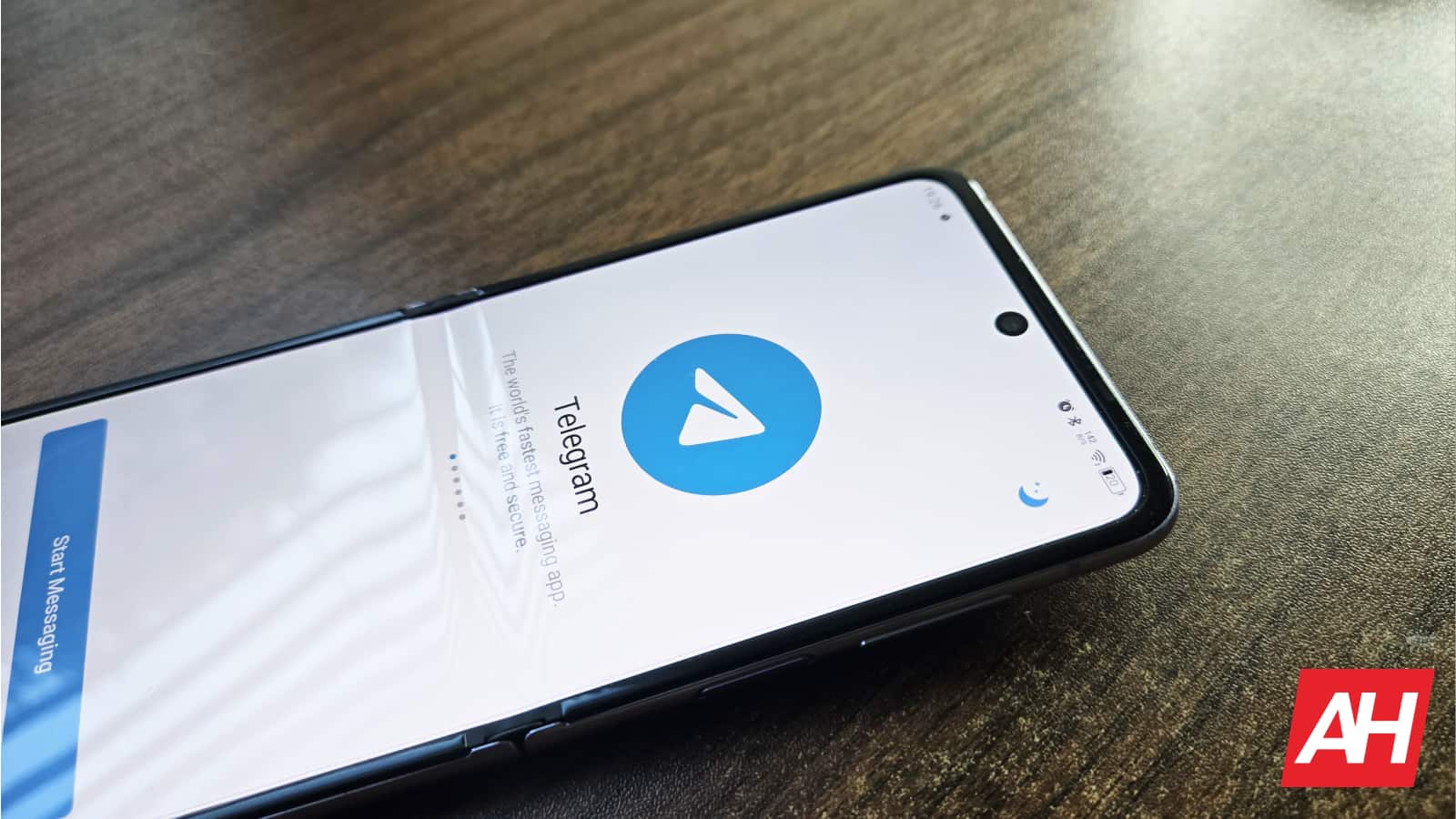
Following the recent arrest and release of Telegram’s CEO in France, the platform has been introducing some changes. One of the main allegations against the service was the lack of responsiveness to data requests by authorities. From now on, Telegram will provide phone numbers and IP addresses in response to potential legal requests.
The arrest of Telegram’s CEO Pavel Durov stemmed from allegations of his involvement in illegal activities on the service. The French government cited the absence of more efficient moderation systems and a lack of collaboration with the authorities as the primary reasons for the arrest. At the time, Durov said that his arrest was a mistake and an erroneous application of the law.
Telegram will provide phone numbers and IP addresses in legal request cases
Later, Telegram modified its FAQs to reflect the existence of the “Report” option in groups. This change had led many to mistakenly believe that Telegram did not have such an option. It always existed, but now the messaging app wanted to make it clear. Users are able to report individual messages or entire groups. It’s noteworthy that the option to report messages is only available in groups. Individual chats between people are entirely private and encrypted, so the option does not exist.
The new changes to Telegram are more proactive regarding moderation. In addition to providing suspects’ phone numbers and IP addresses to authorities, Telegram will use AI and a human team to remove illegal or problematic content from search results. Telegram’s CEO also asked users to report problematic results as soon as they see them.
Anyway, the changes do not seem to affect the privacy of chats per se. There are no content moderation bots for private chats or groups. Authorities will also not have access to suspects’ chats. “To this day, we have disclosed 0 bytes of user messages to third parties, including governments,” claims Durov.
Technology
A The Lord of the Rings Game is now due out in March 2025

Tales of the Shire, a cozy life sim , has gotten a new release date and a strange new name. It’s scheduled for release on March 25, 2025 and it’s now called Tales of the Shire: A The Lord of the Rings Game, because apparently referencing the Shire wasn’t enough to clue in fans. LOTR diehards are well known for being ignorant about the franchise they love. That was extreme sarcasm.
Anyways, this information was served up during Private Division and Wētā Workshop’s , which revealed a lot of new footage and included plenty of interviews with the game’s designers. Wētā Workshop is actually helping to develop the game, after making effects for all of Peter Jackson’s Middle-earth films.
Tales of the Shire: A The Lord of the Rings Game (that really rolls off the tongue) was supposed to come out in 2024, so the developers could iron out some bugs and present a fully realized version of their original vision. Here’s hoping that translates to a polished gameplay experience in March.
For the uninitiated, this is a cozy sim. There are elements of Animal Crossing, Stardew Valley and other games in the genre. There’s farming, fishing and a deep character interaction system. Of course, there’s also a big emphasis placed on cooking huge feasts. We all know how much hobbits love a good feast.
The game looks cute enough and, heck, I’m always down for a new cozy sim. However, the developers have confirmed that there will be no romance, despite the emphasis on cultivating relationships and friendships. The developers say that romance simply doesn’t fit the tone of the game. In any event, Tales of the Shire: A The Lord of the Rings Game will be released for PC via Steam, Nintendo Switch, PS5 and Xbox Series X/S. It’s also coming to Netflix.
Technology
5 Days Left to save $600 on Disrupt 2024 tickets

The countdown to TechCrunch Disrupt 2024 is on, and so are rebooted ticket prices! Save up to $600 on individual ticket types before September 27. Take advantage of these huge last-minute discounts while you still can.
Disrupt 2024 is where the startup ecosystem converges. Taking place at Moscone West in San Francisco from October 28-30, you’ll join 10,000 tech, startup, and VC leaders for 200+ powerful sessions and discussions, 250+ industry expert speakers, and valuable networking.
Lock in your ticket savings by registering now.
Learn from industry heavyweights
With a powerful roster of top tech leaders speaking across six specialized stages, Disrupt 2024 promises three days of insightful discussions. You’ll walk away with valuable knowledge and perspectives to help fuel your next big move.
- Alex Pall and Drew Taggart from The Chainsmokers, Partners and Co-Founders, MANTIS Venture Capital
- Ali Ghodsi, Co-Founder and CEO, Databricks
- Assaf Rappaport, Co-founder and CEO, Wiz
- Bridgit Mendler, CEO, Northwood Space
- Colin Kaepernick, Founder and CEO, Lumi
- Denise Dresser, CEO, Slack from Salesforce
- Erin and Sara Foster, Co-Founders and General Partners, Oversubscribed Ventures
- Peter Beck, Founder and CEO, Rocket Lab
- Mary Barra, Chair and CEO, General Motors
- Vinod Khosla, Founder and Partner, Khosla Ventures
Meet the rest of our speakers.
Networking galore
Disrupt 2024 is packed with a plethora of networking opportunities. Whether you’re a first-time founder, an experienced entrepreneur, a recent graduate seeking your first tech role, or navigating a career transition, you’ll find the connections you need.
Participate in 1:1 or small-group Braindates, attend Side Events and receptions, or explore the Expo Hall — discover numerous ways to expand your network and elevate your brand presence.
Deep-dive sessions
Engage in 200+ Roundtable and Breakout Sessions led by industry experts, designed to spark meaningful discussions on key issues facing today’s entrepreneurs and professionals.
Witness the startup battle
Don’t miss your chance to be front and center at one of Disrupt’s highlight events: Startup Battlefield 200. Watch as the hand-picked 200 pre-Series A startups pitch their innovative concepts to a panel of elite VC judges for a chance to win a $100,000 equity-free prize and the sought-after Disrupt Cup.
Get an insider’s view as leading VCs provide expert feedback, revealing the key factors they consider when evaluating a startup’s viability.
Catch the final sale before Disrupt 2024
Don’t miss your chance to save up to $600 before the countdown to Disrupt 2024 begins! This limited-time offer expires on September 27 at 11:59 p.m. PT.
Technology
ExxonMobil deceived the public with plastic recycling, lawsuit claims
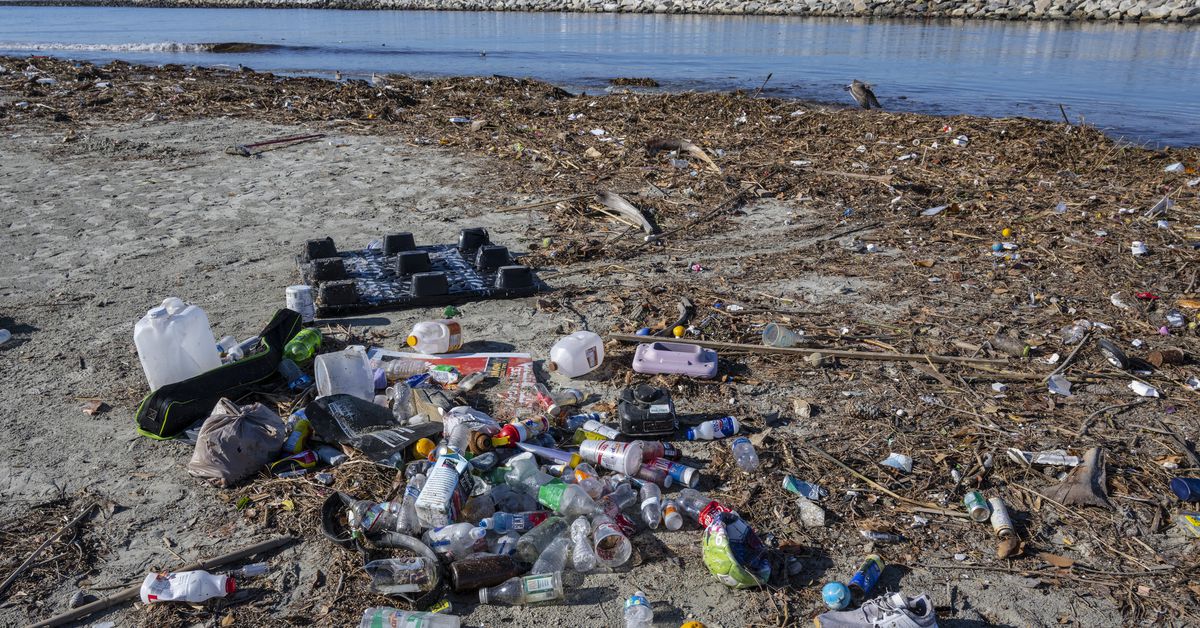
ExxonMobil is the world’s leading producer of single-use plastics that become waste, according to the state attorney general’s office. To encourage people to buy products made with single-use plastics, the suit alleges, ExxonMobil “deceived Californians for almost half a century by promising that recycling could and would solve the ever-growing plastic waste crisis.”
“They clearly knew this wasn’t possible.”
Plastic is quite difficult to reuse, which is why very little of it is ever recycled. Promoting recycling as a cure-all for plastic waste can actually lead to more of it becoming trash, experts warn. Now, the state of California wants to hold industry accountable for the plastic pollution that has accumulated in the environment, animals, and even people’s bodies.
“For decades, ExxonMobil has been deceiving the public to convince us that plastic recycling could solve the plastic waste and pollution crisis when they clearly knew this wasn’t possible,” California Attorney General Rob Bonta said in a press release yesterday.
The AG’s office launched an investigation into the petrochemical industry’s role in creating a plastic “pollution crisis” in 2022. It says it unearthed new documents over the past two years that led the state to file suit this week. The lawsuit alleges that ExxonMobil has violated state public nuisance, natural resources, water pollution, false advertisement, and unfair competition laws through misleading marketing about recycling.
The state is suing for civil penalties and disgorgement, which would force the company to turn over any profits it gained illegally. California also wants to set up an abatement fund and injunctive relief to stop the company from promoting plastics as recyclable the way that it has for years. The attorney general’s office points to a 12-page ad in Time magazine in 1989 on “the urgent need to recycle” as one example of the company’s “campaign of deception.” “Americans have entered an era in which landfilling will no longer be the primary method of garbage disposal,” the ad says.
By 2015, less than 10 percent of plastic waste had ever been recycled. Nearly 80 percent of the 6,300 million metric tons of plastic waste that had been created around the world ended up in landfills or littering the environment.
Even when plastic is rehashed, it’s typically “downcycled” because the quality of the material deteriorates with each use. Plastic bottles are turned into fibers used in carpeting instead of new plastic bottles, for example. And gadgets made with recycled plastic typically have to be reinforced with fresh plastic. It’s often just cheaper for a company to use new plastic rather than recycled materials.
Newer claims from industry about “advanced” or chemical recycling are just as flawed, the attorney general claims, since the majority of plastic waste that goes through that process becomes fuel. The state also claims that plastics produced using ExxonMobil’s “advanced recycling” technology contain such little amounts of used material that “they are effectively virgin plastics.”
ExxonMobil shifted the blame to California in an emailed response to The Verge. “For decades, California officials have known their recycling system isn’t effective. They failed to act, and now they seek to blame others. Instead of suing us, they could have worked with us to fix the problem and keep plastic out of landfills,” the statement says.
One of the selling points for plastic is that it’s lightweight and easy to transport — a characteristic that also makes it easier for plastics to drift into the environment. Once it’s there, it breaks down into tiny particles called microplastics that have flooded the world’s oceans and have been found in everything from seafood to baby poop. Around 21 million pounds of plastic garbage has been collected from California’s beaches and waterways since 1985, according to Bonta’s office.
Plastics are made from fossil fuels and are responsible for 4.5 percent of global greenhouse gas emissions — more than the climate pollution from global shipping.
“While greenwashing certainly isn’t new, the fossil fuel industry in particular has frequently downplayed the impacts that their sector has on climate change,” Cornell University climate and environment legal scholar Leehi Yona said in an emailed statement. “In my view, this latest lawsuit builds on the sustained efforts of many governments to hold fossil fuel companies accountable to the myriad ways they have misled the public on the risks of their products.”
Technology
AI just made a mockery of CAPTCHA and that’s bad news for real people
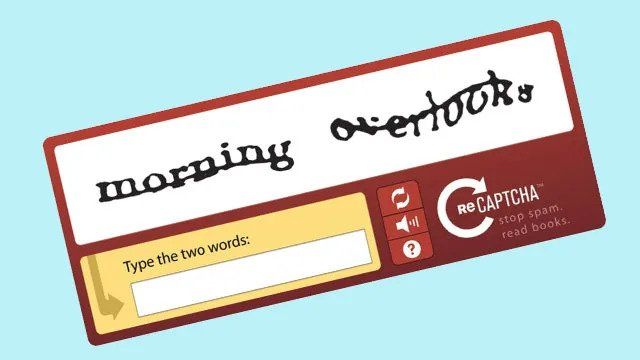
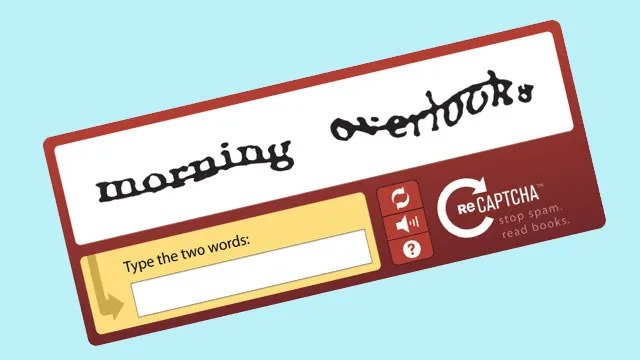
Filling out CAPTCHA puzzles is tedious, but using them as (imperfect) shields against malicious bots made sense, at least until now. Artificial intelligence can now defeat those puzzles every time, according to new research from ETH Zurich. CAPTCHA, an acronym for “Completely Automated Public Turing test to tell Computers and Humans Apart,” is employed across an enormous range of websites.
However, the tool may need renaming based on how well the AI model created by the Swiss researchers solved the security measure’s word and object identification puzzles.
The AI puzzle solver is built on a widely used AI model for processing pictures called You Only Look Once (YOLO). The scientists adjusted YOLO to take on Google‘s popular reCAPTCHAv2 version of CAPTCHA. You’ll immediately recognize reCAPTCAv2 from every time you’ve had to click on a car, bicycle, bridge, or traffic light to prove your humanity.
With 14,000 labeled photos of streets as training data and a little time, however, the scientists could teach YOLO to recognize the objects as well as any human. Exactly as well as a human, in fact, since the AI didn’t solve every puzzle perfectly the first time. But, you may recall how you get more than one chance, assuming you don’t totally mess up the puzzle. YOLO was able to perform well enough that even if it made an error in one puzzle, it would make up for it and succeed with another CAPTCHA puzzle.
Narrowing down the scope of objects users need to identify – often just 13 categories, such as traffic lights, buses, and bicycles – allowed for easier integration across websites.
However, this same focus on a narrow set of object types is what made it easier for the YOLO-based AI model to defeat the system. According to the ETH Zurich team, the system’s simplicity worked to the AI’s advantage, allowing it to master the image-based challenges without much difficulty. Despite attempts to make CAPTCHA more sophisticated by incorporating factors like mouse movement and browser history (known as device fingerprinting), the AI’s success rate remained intact.
The Rise of CAPTCHA-Solving AI
The fact that an AI system can now bypass CAPTCHA systems with a perfect success rate is a wake-up call for the cybersecurity community. CAPTCHA systems are a critical component of web security, designed to prevent bots from engaging in activities like spamming, creating fake accounts, or launching distributed denial-of-service (DDoS) attacks. If these systems are compromised, websites could become more vulnerable to automated attacks and other malicious activities.
The success of the YOLO model in cracking CAPTCHA systems is not an isolated case. In recent years, AI models have demonstrated increasing proficiency in tasks once thought to be exclusive to humans. Solving CAPTCHA puzzles is just the latest milestone in AI advancements that have reshaped expectations around machine learning and automated systems.
Implications for Everyday Users
For the average person, CAPTCHA puzzles are an everyday encounter, whether logging into an online account, submitting a form, or making an online purchase. The security of these interactions hinges on CAPTCHA’s ability to keep bots out. With this latest AI breakthrough, there’s a real risk that CAPTCHA may no longer serve its intended purpose as an effective gatekeeper.
One immediate concern is that if CAPTCHA systems become obsolete or easy for bots to bypass, it could result in an uptick in automated activities such as spam or malicious bot-driven campaigns. For instance, CAPTCHA systems are often employed to prevent bots from creating thousands of fake accounts or automatically posting spammy content across social media platforms. If bots can easily bypass CAPTCHA, it could lead to increased fraudulent activity across websites.
Additionally, as CAPTCHA technology is defeated, websites and service providers will be forced to explore more robust security mechanisms. Some alternatives being discussed include more sophisticated behavioral analysis techniques, such as tracking user interaction patterns, and biometric-based verification systems that rely on fingerprints or facial recognition.
Am I AI?
Proving that you’re not a robot isn’t as easy as it used to be, but that doesn’t mean you have to panic about being replaced any time soon. It’s simply evidence that cybersecurity needs to account for the rapidly evolving capabilities of AI models. CAPTCHA might end up phased out in favor of different puzzles to prove your humanity.
It would have to be more intensive than simply picking the right image. A security setup might have to monitor your behavior in solving a puzzle, like how fast and well you type and scroll. Or it might take a combination of multiple tests and verifications. In other words, cybersecurity will need to be stricter, though hopefully without slowing down web browsing too much. If things get really tough, perhaps we’ll all have to submit a tear after watching Mufasa die in The Lion King.
You might also like
Technology
Smartphone flaw allows hackers and governments to map your home
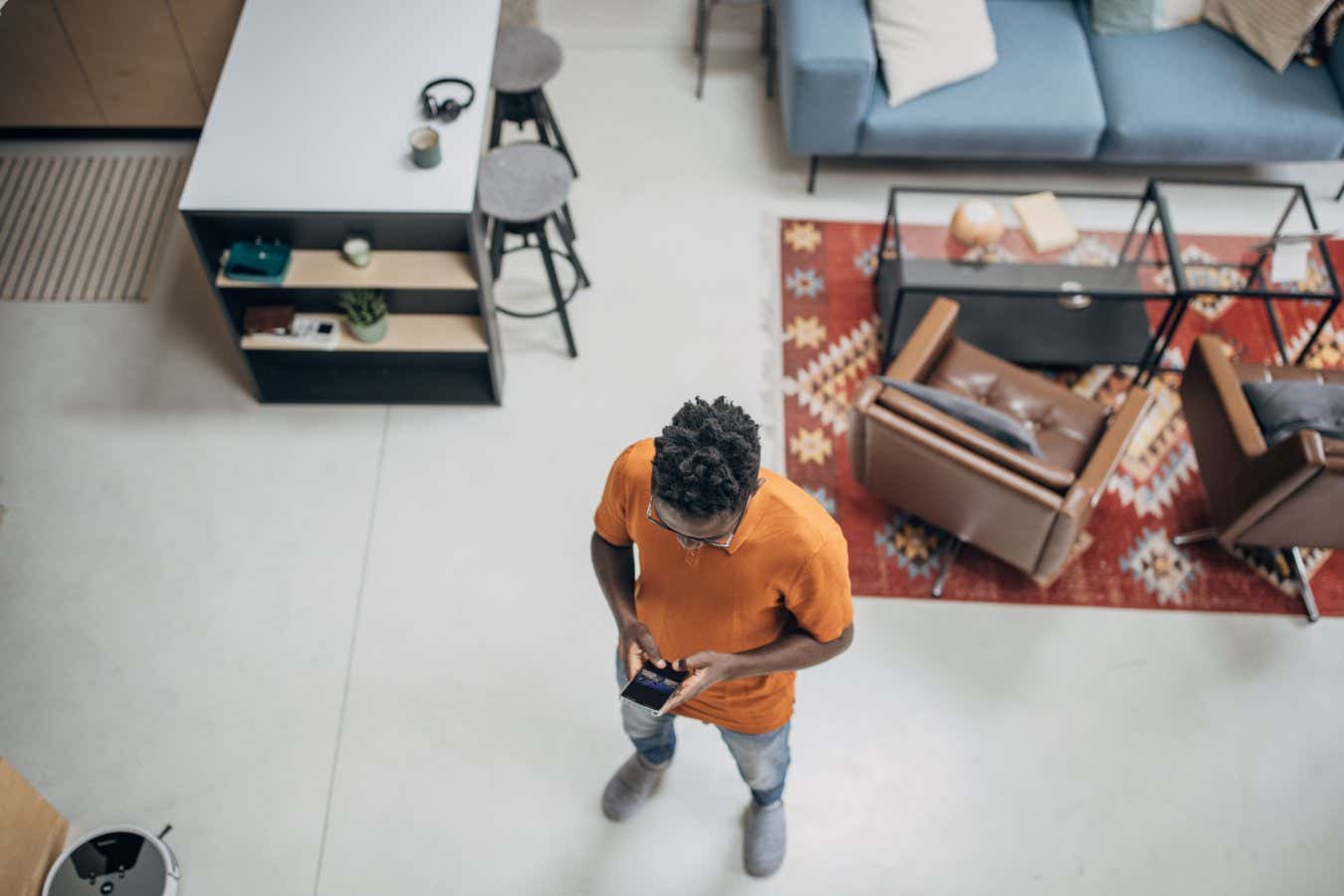

AI can be used to detect where you are and what you are doing from GPS data
South_agency/Getty Images
Hackers, app developers and even government agencies could be using your smartphone to create a map of the room you are in and determine what you are doing. The security vulnerability uses data in the GPS signal and doesn’t require access to data from the camera, microphone or accelerometer.
Soham Nag and Smruti Sarangi at the Indian Institute of Technology Delhi have been researching whether any information other than location could be extracted from GPS signals when Android smartphone…
-

 Womens Workouts9 hours ago
Womens Workouts9 hours ago3 Day Full Body Women’s Dumbbell Only Workout
-

 News5 days ago
News5 days agoYou’re a Hypocrite, And So Am I
-

 Sport4 days ago
Sport4 days agoJoshua vs Dubois: Chris Eubank Jr says ‘AJ’ could beat Tyson Fury and any other heavyweight in the world
-

 News2 days ago
News2 days agoOur millionaire neighbour blocks us from using public footpath & screams at us in street.. it’s like living in a WARZONE – WordupNews
-

 Technology6 days ago
Technology6 days agoWould-be reality TV contestants ‘not looking real’
-

 Science & Environment5 days ago
Science & Environment5 days agoHow to unsnarl a tangle of threads, according to physics
-

 Science & Environment5 days ago
Science & Environment5 days ago‘Running of the bulls’ festival crowds move like charged particles
-

 CryptoCurrency4 days ago
CryptoCurrency4 days agoEthereum is a 'contrarian bet' into 2025, says Bitwise exec
-

 Science & Environment5 days ago
Science & Environment5 days agoLiquid crystals could improve quantum communication devices
-

 CryptoCurrency4 days ago
CryptoCurrency4 days agoDZ Bank partners with Boerse Stuttgart for crypto trading
-
Travel1 day ago
Where Retro Glamour Meets Modern Chic in Athens, Greece
-

 Science & Environment5 days ago
Science & Environment5 days agoWhy this is a golden age for life to thrive across the universe
-

 Science & Environment5 days ago
Science & Environment5 days agoQuantum ‘supersolid’ matter stirred using magnets
-

 Science & Environment5 days ago
Science & Environment5 days agoSunlight-trapping device can generate temperatures over 1000°C
-

 Health & fitness6 days ago
Health & fitness6 days agoThe secret to a six pack – and how to keep your washboard abs in 2022
-

 CryptoCurrency4 days ago
CryptoCurrency4 days agoBitcoin miners steamrolled after electricity thefts, exchange ‘closure’ scam: Asia Express
-

 CryptoCurrency4 days ago
CryptoCurrency4 days agoCardano founder to meet Argentina president Javier Milei
-

 CryptoCurrency4 days ago
CryptoCurrency4 days agoDorsey’s ‘marketplace of algorithms’ could fix social media… so why hasn’t it?
-

 CryptoCurrency4 days ago
CryptoCurrency4 days agoLow users, sex predators kill Korean metaverses, 3AC sues Terra: Asia Express
-

 CryptoCurrency4 days ago
CryptoCurrency4 days agoBitcoin bulls target $64K BTC price hurdle as US stocks eye new record
-

 News4 days ago
News4 days agoIsrael strikes Lebanese targets as Hizbollah chief warns of ‘red lines’ crossed
-

 Science & Environment5 days ago
Science & Environment5 days agoHyperelastic gel is one of the stretchiest materials known to science
-

 Science & Environment5 days ago
Science & Environment5 days agoMaxwell’s demon charges quantum batteries inside of a quantum computer
-

 Science & Environment5 days ago
Science & Environment5 days agoQuantum forces used to automatically assemble tiny device
-

 News4 days ago
News4 days agoBrian Tyree Henry on voicing young Megatron, his love for villain roles
-

 Science & Environment5 days ago
Science & Environment5 days agoITER: Is the world’s biggest fusion experiment dead after new delay to 2035?
-

 Science & Environment5 days ago
Science & Environment5 days agoHow to wrap your mind around the real multiverse
-

 Science & Environment5 days ago
Science & Environment5 days agoPhysicists are grappling with their own reproducibility crisis
-

 Science & Environment5 days ago
Science & Environment5 days agoNuclear fusion experiment overcomes two key operating hurdles
-

 CryptoCurrency4 days ago
CryptoCurrency4 days agoRedStone integrates first oracle price feeds on TON blockchain
-

 CryptoCurrency4 days ago
CryptoCurrency4 days agoSEC asks court for four months to produce documents for Coinbase
-

 CryptoCurrency4 days ago
CryptoCurrency4 days agoVitalik tells Ethereum L2s ‘Stage 1 or GTFO’ — Who makes the cut?
-

 CryptoCurrency4 days ago
CryptoCurrency4 days agoBlockdaemon mulls 2026 IPO: Report
-

 Womens Workouts3 days ago
Womens Workouts3 days agoBest Exercises if You Want to Build a Great Physique
-

 Womens Workouts3 days ago
Womens Workouts3 days agoEverything a Beginner Needs to Know About Squatting
-

 Science & Environment1 day ago
Science & Environment1 day agoMeet the world's first female male model | 7.30
-

 Sport4 days ago
Sport4 days agoUFC Edmonton fight card revealed, including Brandon Moreno vs. Amir Albazi headliner
-

 Technology4 days ago
Technology4 days agoiPhone 15 Pro Max Camera Review: Depth and Reach
-

 Science & Environment5 days ago
Science & Environment5 days agoHow one theory ties together everything we know about the universe
-

 Science & Environment5 days ago
Science & Environment5 days agoLaser helps turn an electron into a coil of mass and charge
-

 Science & Environment5 days ago
Science & Environment5 days agoQuantum time travel: The experiment to ‘send a particle into the past’
-

 CryptoCurrency4 days ago
CryptoCurrency4 days ago2 auditors miss $27M Penpie flaw, Pythia’s ‘claim rewards’ bug: Crypto-Sec
-

 CryptoCurrency4 days ago
CryptoCurrency4 days agoJourneys: Robby Yung on Animoca’s Web3 investments, TON and the Mocaverse
-

 CryptoCurrency4 days ago
CryptoCurrency4 days ago$12.1M fraud suspect with ‘new face’ arrested, crypto scam boiler rooms busted: Asia Express
-

 Science & Environment5 days ago
Science & Environment5 days agoFuture of fusion: How the UK’s JET reactor paved the way for ITER
-

 CryptoCurrency4 days ago
CryptoCurrency4 days agoCertiK Ventures discloses $45M investment plan to boost Web3
-

 CryptoCurrency4 days ago
CryptoCurrency4 days agoVonMises bought 60 CryptoPunks in a month before the price spiked: NFT Collector
-

 CryptoCurrency4 days ago
CryptoCurrency4 days ago‘Silly’ to shade Ethereum, the ‘Microsoft of blockchains’ — Bitwise exec
-

 CryptoCurrency4 days ago
CryptoCurrency4 days ago‘No matter how bad it gets, there’s a lot going on with NFTs’: 24 Hours of Art, NFT Creator
-
Business4 days ago
How Labour donor’s largesse tarnished government’s squeaky clean image
-

 News4 days ago
News4 days agoBrian Tyree Henry on voicing young Megatron, his love for villain roles
-

 CryptoCurrency4 days ago
CryptoCurrency4 days agoCoinbase’s cbBTC surges to third-largest wrapped BTC token in just one week
-

 News3 days ago
News3 days agoBangladesh Holds the World Accountable to Secure Climate Justice
-

 News5 days ago
News5 days agoChurch same-sex split affecting bishop appointments
-

 Politics6 days ago
Politics6 days agoTrump says he will meet with Indian Prime Minister Narendra Modi next week
-

 Technology4 days ago
Technology4 days agoFivetran targets data security by adding Hybrid Deployment
-

 Science & Environment5 days ago
Science & Environment5 days agoA new kind of experiment at the Large Hadron Collider could unravel quantum reality
-

 Politics4 days ago
Politics4 days agoLabour MP urges UK government to nationalise Grangemouth refinery
-

 Science & Environment6 days ago
Science & Environment6 days agoTime travel sci-fi novel is a rip-roaringly good thought experiment
-

 CryptoCurrency4 days ago
CryptoCurrency4 days agoHelp! My parents are addicted to Pi Network crypto tapper
-

 CryptoCurrency4 days ago
CryptoCurrency4 days agoCrypto scammers orchestrate massive hack on X but barely made $8K
-

 Science & Environment5 days ago
Science & Environment5 days agoWhy we need to invoke philosophy to judge bizarre concepts in science
-

 Science & Environment5 days ago
Science & Environment5 days agoHow do you recycle a nuclear fusion reactor? We’re about to find out
-

 CryptoCurrency4 days ago
CryptoCurrency4 days agoSEC sues ‘fake’ crypto exchanges in first action on pig butchering scams
-

 CryptoCurrency4 days ago
CryptoCurrency4 days agoElon Musk is worth 100K followers: Yat Siu, X Hall of Flame
-

 CryptoCurrency4 days ago
CryptoCurrency4 days agoBitcoin price hits $62.6K as Fed 'crisis' move sparks US stocks warning
-

 CryptoCurrency4 days ago
CryptoCurrency4 days agoCZ and Binance face new lawsuit, RFK Jr suspends campaign, and more: Hodler’s Digest Aug. 18 – 24
-

 CryptoCurrency4 days ago
CryptoCurrency4 days agoTelegram bot Banana Gun’s users drained of over $1.9M
-

 CryptoCurrency4 days ago
CryptoCurrency4 days agoEthereum falls to new 42-month low vs. Bitcoin — Bottom or more pain ahead?
-

 CryptoCurrency4 days ago
CryptoCurrency4 days agoETH falls 6% amid Trump assassination attempt, looming rate cuts, ‘FUD’ wave
-
Politics4 days ago
‘Appalling’ rows over Sue Gray must stop, senior ministers say | Sue Gray
-

 CryptoCurrency4 days ago
CryptoCurrency4 days agoBitcoin options markets reduce risk hedges — Are new range highs in sight?
-

 Money4 days ago
Money4 days agoBritain’s ultra-wealthy exit ahead of proposed non-dom tax changes
-

 Womens Workouts3 days ago
Womens Workouts3 days agoHow Heat Affects Your Body During Exercise
-

 Womens Workouts3 days ago
Womens Workouts3 days agoKeep Your Goals on Track This Season
-

 Womens Workouts3 days ago
Womens Workouts3 days agoWhich Squat Load Position is Right For You?
-

 News2 days ago
News2 days agoWhy Is Everyone Excited About These Smart Insoles?
-

 News1 day ago
News1 day agoFour dead & 18 injured in horror mass shooting with victims ‘caught in crossfire’ as cops hunt multiple gunmen
-

 Womens Workouts9 hours ago
Womens Workouts9 hours ago3 Day Full Body Toning Workout for Women
-

 News5 days ago
News5 days agoPolice chief says Daniel Greenwood 'used rank to pursue junior officer'
-

 Money5 days ago
Money5 days agoWhat estate agents get up to in your home – and how they’re being caught
-

 Technology7 days ago
Technology7 days ago‘The dark web in your pocket’
-

 Business7 days ago
Business7 days agoGuardian in talks to sell world’s oldest Sunday paper
-

 Science & Environment5 days ago
Science & Environment5 days agoHow to wrap your head around the most mind-bending theories of reality
-

 Technology6 days ago
Technology6 days agoCan technology fix the ‘broken’ concert ticketing system?
-

 Fashion Models4 days ago
Fashion Models4 days ago“Playmate of the Year” magazine covers of Playboy from 1971–1980
-

 News1 week ago
News1 week agoDid the Pandemic Break Our Brains?
-

 Fashion Models4 days ago
Fashion Models4 days agoAchtung Magazine
-

 Politics6 days ago
Politics6 days agoTrump Media breached ARC Global share agreement, judge rules
-

 Fashion Models4 days ago
Fashion Models4 days agoMixte
-

 Science & Environment5 days ago
Science & Environment5 days agoHow Peter Higgs revealed the forces that hold the universe together
-

 News5 days ago
News5 days ago▶️ Media Bias: How They Spin Attack on Hezbollah and Ignore the Reality
-

 Science & Environment5 days ago
Science & Environment5 days agoTake a look behind the scenes at the world’s largest fusion experiment
-

 News5 days ago
News5 days agoRoad rage suspects in custody after gunshots, drivers ramming vehicles near Boise
-

 Health & fitness6 days ago
Health & fitness6 days agoWhen Britons need GoFundMe to pay for surgery, it’s clear the NHS backlog is a political time bomb
-

 Health & fitness6 days ago
Health & fitness6 days agoAnxiety robbed me of my sleep – and by 32, my life was a car crash
-

 Science & Environment6 days ago
Science & Environment6 days agoNerve fibres in the brain could generate quantum entanglement
-
Business7 days ago
Glasgow to host scaled-back Commonwealth Games in 2026
-

 Science & Environment5 days ago
Science & Environment5 days agoX-ray laser fires most powerful pulse ever recorded
-

 Politics6 days ago
Politics6 days agoLib Dems aim to turn election success into influence

You must be logged in to post a comment Login